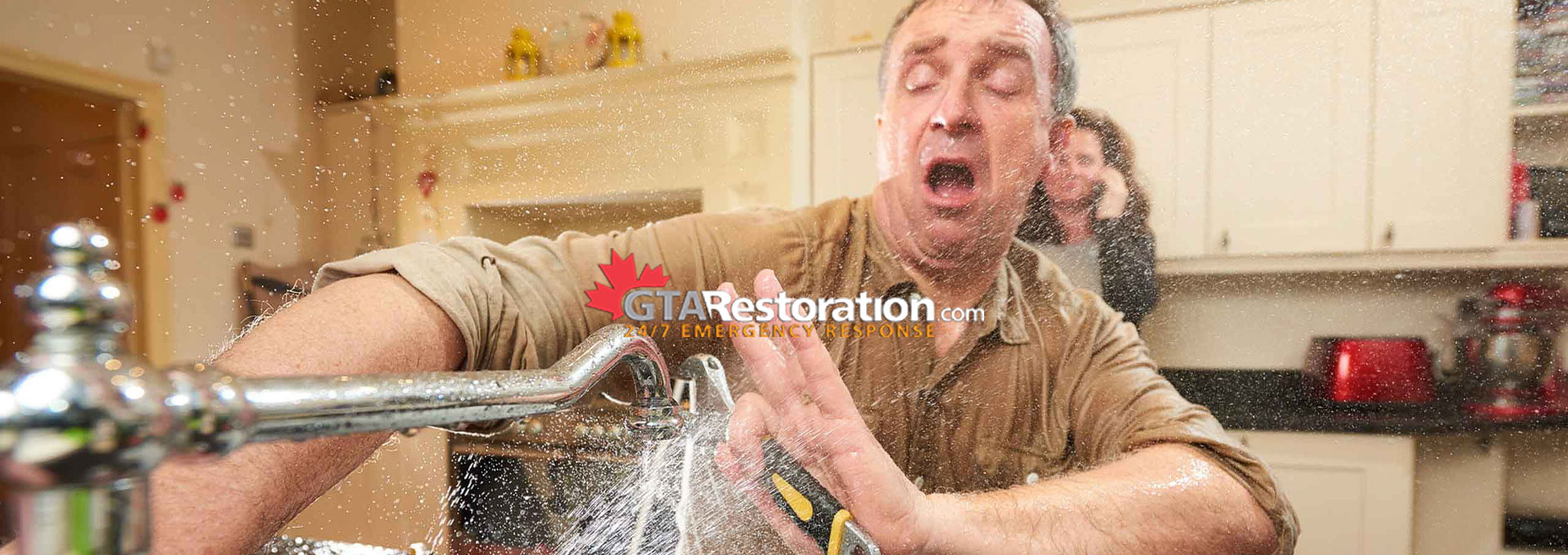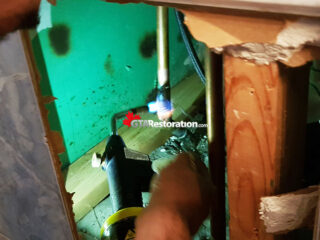Edmonton Burst Pipe Repair Services – Frozen Pipe Service
A burst pipe in Edmonton can cause permanent damage and expensive repairs. The first and most important thing you must do is turn off your home’s water supply immediately to stop the water leak. Turning off the water will help to reduce damage until you can inspect it.
Once the water is turned off and you can inspect the damage, you can decide whether to hire a plumber or do the repair yourself. Repairing a burst pipe does not require advanced plumbing skills, but you must understand the fundamentals.
Burst pipes in Edmonton frequently occur unexpectedly and without warning. As a result, pipeline damages due to frozen water issues. Because of modern fittings, some repairs are extremely simple. Others necessitate soldering equipment. If your pipe burst due to a frozen pipe, installing a stop and waste valve will help ensure that the pipe does not freeze again.
Rapidly responding to the burst pipeline and contacting us will help to minimize structural damage in your home or workplace. Burst pipes in Edmonton can destroy your home’s sanitation system’s hidden coverage and inner installation.
Our technicians will inspect your home and perform a thorough inspection before diagnosing problems such as non-emergency or emergency burst pipes caused by frozen pipes. During the water damage inspection, the technicians will find the source of the damage and act fast to fix the problem ASAP! And in addition assessment is conducted based on the damage that’s been created.
We provide a full detailed scope of work immediately after the inspection is completed so that we could be able to work to save your property from any other additional structural damage.

Burst Pipe Repair Procedure in Edmonton
Process we adopt to repair burst pipe as an expert company:
Turn off the entire water supply
We turn off the main water valve that allows water into your building. This prevents water from flowing through pipes. When the pressure is turned off, the leak may slow down or stop. Also, turn on the lowest fixture in the house, such as the nearest sink, to relieve water pressure.
Finding leakage in the pipe
After evaluating the pipe breakage. A small hole can be repaired by cutting the pipe and installing a push-to-connect fitting to bridge the gap between pipes. If there is any doubt that a pipe will freeze again, we install a new stop-and-waste valve.
Determine where a new fitting should go
By planning that where the fitting or valve to go on a water line in a home. This is the point at which we cut the pipe in order to remove the damaged area and drain the remaining water.
Depleting the drains
Even if pressure is released through other fixtures, draining the pipes is an essential step in removing the water from burst pipes. To remove the damaged section of pipe, we rotate the pipe cutter around the pipe and gradually tighten it until it cuts through. As the pipe is severed, water begins to drain. We use steel wool to remove any burrs from the cut pipe’s end.
Setting up and positioning the valve
Petcock is temporarily removed while installing a valve. Arrow points are observed that indicates the direction of the water flow by insuring to install the valve in the right direction. After fitting and reconnect both ends of the pipe, and bridging the burst area that was removed and turning on the water supply again we monitor for leaks.
Cutting of copper pipe to length
We cut a section of copper pipe to the appropriate length to fill the gap left by the broken pipe, making sure that the new pipe has the same diameter as the old one. A little extra length ensures a good fit.
Cleaning and flux addition
By using steel wool both the pipe end and inside the stop-and-waste valve are cleaned. Soldering flux is applied to the pipe end and inside the valve fitting. The valve is slid onto the end of the pipe.
Heat the fitting and pipe
Using a propane torch and safety goggles, it is heated the fitting and the pipe where they connect. Hold the edge of the blue flame directly against the pipe for the best results.

Plumbing Pipe Repair
Melt the solder into the connection
2 inches of solder is inserted into the joint where the valve connects to the pipe. The solder melts and seep into the connection as a result of the heat. Pipe-valve connection is completely solder. By installing the new assembly to the water line, the same soldering techniques are used as before to connect the new pipe to the existing water line. New inexpensive copper fittings are used. Copper fittings come in a variety of configurations and diameters.
Turn on the water for leaks check
The petcock is replaced and the main water line is tested for leaks.
Safety Measures To Avoid Burst Pipe Or Frozen Pipe In Edmonton
Keep these two goals in mind as you study your options for your home:
- You must prevent cold air from entering areas near your plumbing.
- You must protect and add warmth to areas where cold air cannot be prevented.
- Even if you are away, keep the house as warm as possible by installing lag pipes in exposed or draughty areas.
Tips To Prevent Burst Pipe Or Frozen Pipes In Edmonton
Many of the steps you can take to avoid damage are simple and inexpensive. Follow these tips to prevent burst pipe or frozen pipes in Edmonton:
- Expose Plumbing
- Improve insulation
- Shop products to prevent frozen pipes
- Make use of space heaters and fans
- Use trickle faucets and bath tubs
Note that before temperatures drop below freezing, close the valve and open any spigots downstream of it. Then, to drain the pipe, unscrew the petcock screw. Then remove the petcock screw to drain the pipe. If any sections of pipe upstream of the new valve are in an unheated area, it’s best to cover them with foam pipe insulation to prevent freezing.
Burst Pipe, Frozen Pipe Emergency in Edmonton?
Call Today!
1-800-506-6048
Mold Removal Edmonton, Water Damage Edmonton, Asbestos Removal Edmonton, Frozen Pipe Burst Toronto, How to Prevent Frozen Pipes Burst in the Winter, GTA Restoration Toronto,
Tags: Brampton Water Damage, Burlington Flood Cleanup, Burlington Water Damage, Caledon Water Damage, Etobicoke Water Damage, Flood Cleanup, Flood Cleanup Ajax, Flood Cleanup Aurora, Flood Cleanup Brampton, Flood Cleanup Burlington, Flood Cleanup Service Near Me, Flood Cleanup Service Near You, Restore Location Ajax, Restore Location Near Me, Sewage Clean up, Water Damage, Water Damage Ajax, Water Damage Aurora, Water Damage Burlington, Water Damage Caledon, Water Damage Etobicoke, Water Damage Restoration Aurora, Water Damage Restoration Caledon, Water Damage Service Near Me, Water Damage Service Near You, Water Damage Woodbridge, Water Flood Damage Repair Ajax, Woodbridge Water Damage









